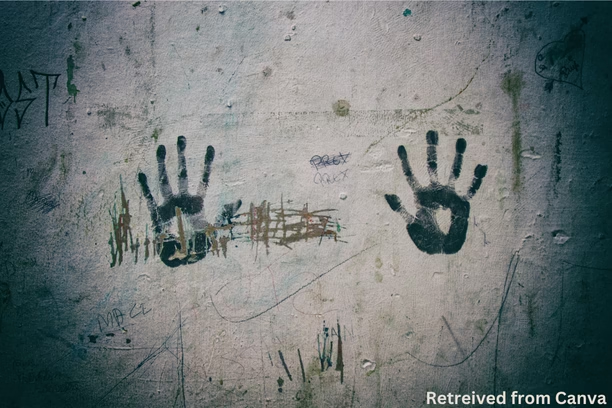On the night of July 6th this year, in Tetgama village, Bihar, five members of a family, including three women, were brutally beaten and burned alive by a mob of nearly 200 villagers. The alleged reason: the family had been accused of practicing witchcraft following the death of a child. As per police reports, the deceased had been approached by the grieving father for treatment. When the child died, the family, including a 16-year-old survivor, was labeled as witches and subjected to extrajudicial punishment in a chilling act of collective vigilantism. The perpetrators not only set them on fire, but also stuffed the charred bodies into sacks and disposed of them under the cover of darkness.
This horrific incident is not an isolated aberration, but part of a long and ongoing pattern of gendered, caste-inflected violence across India, particularly in states such as Bihar, Jharkhand, Odisha, Assam, and Chhattisgarh. Witch-hunting, the practice of branding individuals, often women, as witches and subjecting them to varying degrees of torture, ostracisation, or murder, persists not merely due to superstition, but because of deeply entrenched material and social inequalities. Women who are widowed, landholding, assertive, or economically independent are disproportionately targeted. Often, the branding serves as a cover for other motivations: property disputes, caste tensions, or the disciplining of female autonomy.
National data reveals the entrenched nature of witch-hunting violence. Between 2001 and 2016, the NCRB recorded 2,468 murders linked to witchcraft accusations, including 134 killings in 2016 alone. These figures, however, likely understate the true scale of the violence due to underreporting and misclassification, many cases are filed under land disputes or personal conflicts, obscuring the caste and gendered dimensions. Since 2017, the NCRB has stopped publishing separate data on witch persecution, further limiting visibility. More critically, the data captures only the most extreme outcome i.e., murder, while overlooking the pervasive social ostracisation, sexual violence, and torture that often precede it. Frequently, a woman’s suffering is officially acknowledged only after her death.
Accusations often stem from the death of a child or illness in a family, where, in the absence of accessible healthcare, traditional healers or Ojhas redirect blame onto women under the guise of identifying witches. In such contexts, patriarchal beliefs, economic precarity, and the absence of state services converge to produce a lethal environment for those deemed deviant.
In this piece, the Bihar Witch Practices Act 1999 (“BWP Act or Act”) is analysed as a legislative response to such violence. However the analysis goes beyond the surface, examining how the Act, despite criminalising identification and violence, fails to address the structural and intersectional roots of witch-hunting. Drawing on feminist legal theory and justice frameworks, the critique reveals how laws like Bihar’s often perform recognition through punishment, while leaving intact the systems that allow such violence to flourish. The piece argues that unless legal interventions are embedded in redistributive, participatory, and culturally sensitive frameworks, they risk reinforcing the very hierarchies they claim to dismantle.
The Bihar Witch Practices Act: Legislating Harm without Disrupting Power
The BWP Act presents itself as a legislative intervention in the endemic problem of witch-branding and hunting. The Act defines and criminalises the identification of a woman as a witch, physical or mental harm caused as a consequence of such identification, and related acts of traditional “healing” such as jhadphook or totka. While this formal legal recognition appears to mark a progressive commitment to addressing gendered violence, a closer analysis reveals that the Act is primarily carceral in design and minimal in scope.
Like its counterparts in Odisha and Assam, the BWP Act frames witch-hunting as a problem of individual deviance rather than a manifestation of structural, intersectional oppression. The Act’s textual construction, focused largely on criminalising the “identifier” and the “Ojha“, presents the violence as an aberration, one that can be solved through punitive discipline, rather than as a symptom of entrenched social hierarchies.
At first glance, the BWP Act appears to respond meaningfully to a deeply entrenched form of violence by criminalising the identification of women as witches and prohibiting the so-called “curing” practices associated with such accusations. However, a deeper reading reveals that the form of recognition the Act offers is both narrow and superficial. The Act recognises the act of branding and healing as criminal offences but does so in a vacuum, stripped of historical, social, and political context.
The very definition of a “witch” as someone “identified as a witch by someone else having the power or intention of harming any person through the art of black magic” reifies rather than deconstructs the epistemic framework within which accusations of witchcraft arise. Rather than dismantling the cultural logic that permits such identifications, the Act codifies it, inadvertently legitimising the ontology of supernatural harm. The legal system thus risks affirming the category of the “witch” even while it attempts to criminalise its invocation.
This limited form of recognition reflects a broader pattern in which symbolic inclusion is offered without challenging the deeper structures of cultural and material subordination, remedies that acknowledge harm without unsettling the hierarchies that produce it. Thus, the recognition, here, itself becomes performative.One of the most striking omissions in the BWP Act is any attention to the material and economic conditions that make women vulnerable to witch-branding. Witch-hunting does not arise in a social vacuum. It is often entangled with disputes over land, inheritance, access to government benefits, or women’s refusal to conform to localised caste or gender hierarchies. By ignoring these contexts, the Act fails to recognise that such violence is not simply the result of superstition, but a disciplinary mechanism deployed to police dissent and extract control from marginalised women, particularly Adivasi and Dalit women in resource-scarce rural communities.
The absence of redistributive measures in the BWP Act reveals a failure to address the economic structures that sustain social harm. The Act offers no provisions for compensation, rehabilitation, income support, legal aid, or health services for survivors of witch-hunting. It also neglects to mandate the training of police, healthcare providers, or judicial personnel in recognising the structural roots of such violence. By excluding these mechanisms, the BWP Act ultimately leaves survivors exposed to the very social and economic conditions that enabled their persecution.
Furthermore, the paltry fines and limited terms of imprisonment outlined in the BWP Act signal the low punitive value assigned to the violence. With imprisonment terms ranging from three months to one year, and fines as low as ₹1,000–₹2,000, the Act reduces structural violence to minor, individual misdemeanours. In doing so, it trivialises the scale and impact of the harm, while also making it unlikely that survivors will risk community backlash to pursue justice through the courts.
The BWP Act does not offer any mechanisms to ensure that affected communities, particularly the women who are most vulnerable to witch-hunting, are included in the framing, monitoring, or implementation of the Act. There is no mention of village-level committees, tribal women’s collectives, or survivor-led forums. This absence is not merely a procedural gap; it represents a deeper form of misframing, whereby the Act excludes those who experience the violence most acutely from participating in its redressal.
By treating witch-hunting as a narrow criminal offence, rather than a form of intersectional and structural harm, the BWP Act fails to uphold parity of participation. Representation here would mean not just token inclusion, but the active centering of survivors’ experiences in defining justice, redress, and institutional responsibility. In the absence of such participatory infrastructure, the Act risks becoming a top-down imposition that neither resonates with nor adequately protects the communities it seeks to serve.
Moreover, the Act remains silent on the intersectionality of caste, gender, and indigeneity that characterises most cases of witch-hunting. Without explicit provisions addressing these axes, the Act remains blind to the very hierarchies it claims to dismantle. While Assam’s law at least gestures toward holistic redress with clauses on shelter and support (however vague), the BWP Act remains strictly punitive, its imagination of justice confined to arrest, trial, and incarceration.
Like the Odisha and Assam statutes, the BWP Act exemplifies a carceral approach to social harm, relying on punitive legal provisions to address what is fundamentally a political, economic, and gendered crisis. In doing so, it aligns with the logic of carceral feminism, even as it fails to deliver meaningful justice or transformation. The Act offers neither trauma-informed care for survivors nor safeguards against retaliation by the community. It places the burden of reporting and prosecuting on the very women who are likely to face the most resistance and least institutional support.
Such legislation risks reproducing violence in the name of justice. In rural Bihar, where formal legal systems remain inaccessible to many, and where caste-based and patriarchal violence often goes unpunished, an Act that merely criminalises without enabling community-rooted transformation risks becoming irrelevant, or worse, harmful.
Conclusion: From Punishment to Transformation
The Bihar Witch Practices Act, while well-intentioned in its formal recognition of witch-branding as a form of harm, remains severely limited in its potential to deliver transformative justice. It criminalises the act of witch identification and associated violence, but leaves untouched the cultural, economic, and epistemic structures that enable and sustain such practices. The Act offers symbolic recognition without redistribution, and punitive sanction without participatory redress. In doing so, it reflects a broader pattern in Indian legal responses, where gendered violence is acknowledged in form but depoliticised in substance.
What is urgently needed is a different legal imagination, one that does not isolate witch-hunting as a deviant crime, but understands it as a social practice rooted in intersecting systems of caste, patriarchy, land dispossession, and epistemic control. Witch-hunting cannot be eliminated by criminalisation alone; it demands legal engagement with the worldviews that legitimise such violence and the socio-economic conditions that facilitate it. This is precisely why India must move toward enacting central legislation that is both comprehensive and grounded in intersectional realities. The 2016 and 2022 Bill on witch-hunting represent attempts, however flawed or incomplete, to articulate a nationwide response. Yet neither has been passed, leaving the issue fragmented across inconsistent state laws and political apathy. A central law must go beyond the bare language of prohibition to embed justice as redistribution, recognition, and representation, centering the voices of Dalit, Adivasi, and rural women who disproportionately suffer this violence.
Until such a vision shapes our legislative frameworks, laws like the BWP Act will continue to treat witch-hunting as an episodic aberration, rather than what it truly is: a routine manifestation of casteist-patriarchal control, too often reproduced through the state’s own institutional silences.


Leave a Reply